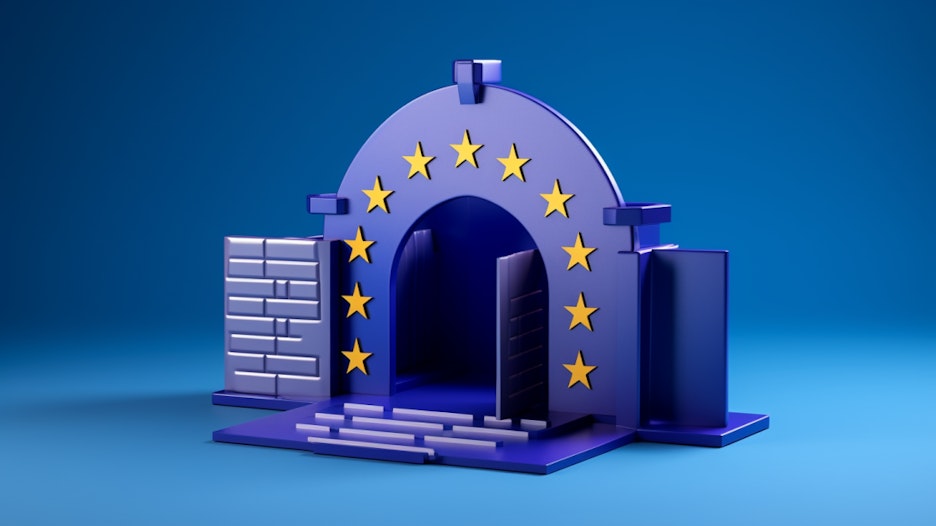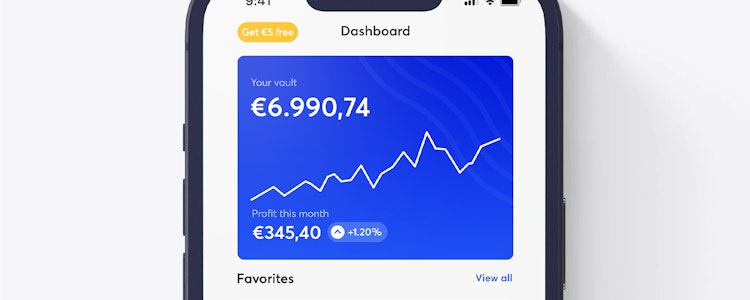News - ECB takes pause: Is this the turning point?
This week, on Oct. 26, ECB boss Christine Lagarde spoke out against raising interest rates further. After 10 interest rate hikes in a row, the European central bank is stopping or pausing interest rates for the first time. The main interest rate for the euro zone will initially stand at 4.5 percent.
At the press conference in Athens on Thursday afternoon, Lagarde provided more information on her assessment of the monetary policy situation. As expected, she stuck to her statement that the ECB is trying to stay in the restrictive zone for as long as possible. As vague as their statements may be, they ultimately revealed much about the central bank's options. In this context, the question of how the macroeconomic situation and interest rate environment may affect asset prices is more important than ever.
This is especially true for Bitcoin. After all, cryptocurrencies are highly dependent on monetary policy decisions. The following therefore outlines what the current monetary policy scenario means for the Bitcoin price and the cryptocurrency market in general in the coming months.
ECB interest rate stop: How should the stop be interpreted?
Of course, Lagarde made no statement on whether interest rates had peaked. However, the statements of various market participants and the current price environment suggest that the market collective is increasingly preparing for the interest rate peak scenario.
Robin Brooks, chief economist at the major banking organization IIF in Washington, said sharply against the Handelsblatt: "The ECB says it's too early to cut interest rates. You say that before you cut." Brooks is probably saying what more and more market participants are thinking: The ECB's room for interest rate hikes has been used up.
Who should pay for it?
The crucial question for states, businesses and private households is: Who should pay for it? Ultimately, you can't just look at state debt; you have to consider the debt levels of businesses and private households. Rising interest costs, social costs, military spending, increasing protectionism and the transformation to an environmentally sustainable economy simply cannot be financed in the long run with current GDP growth rates.
For this to succeed, simply put, there are only two options. Either we experience an economic growth miracle due to artificial intelligence, blockchain, etc. or the cost of money or interest falls.
For the latter option, there is the possibility of market inconsistent interventions. The ECB could buy up government and corporate bonds, thus engaging in quantitative easing, thus indirectly steering market interest rates. The other option, which can certainly be combined with the first, is to act as a central bank to lower key interest rates.
Key figures, please!
To understand the current macroeconomic situation in the euro area and draw conclusions about future ECB policy against this background, it is important to look at a few economic figures or key figures.
Since the outbreak of the financial crisis in 2008, the euro zone's public debt has doubled from 6.2 trillion to 12.9 trillion euros. With interest costs close to zero, this has not been a problem until now. Given current base interest rates, this level of debt is an almost unbearable burden on household budgets, at least in the long run.
Weak economic growth in the euro zone - the IMF predicts a 0.5 percent drop in economic growth for Germany - is lacking the necessary surplus to handle new debt or refinancing.
Concerns about a euro crisis continue to grow. This is particularly evident in the differences between German and Italian government bonds. Italy's 10-year government bonds have an interest rate premium of about two percent over federal bonds. To avoid further turmoil and not overburden the Italian government budget, the ECB may soon be forced to buy up Italian government bonds again.
Of course, there are many other examples that illustrate the tense situation in the euro area. There are certainly positive examples of economic development here and there. However, these are unlikely to be enough to give the ECB enough room to continue its restrictive monetary policy stance.
The interest rate forecast for 2024
The more debt that has to be refinanced, the greater the pressure to lower interest rates again. After all, generally speaking, states do not repay their debts, but simply issue new bonds. The state, in turn, uses the capital raised to cover current interest payments. Therefore, the amount of state debt is less important, because ultimately it is the interest rate that determines the real pressure on the budget.
Against this background, it can be assumed - extreme economic scenarios aside - that the 4.5 percent is an interest rate peak. Over the next year, the need for easing measures is likely to increase by the month. When this happens depends very much on how long the ECB thinks the economy will sustain current interest rate levels.
If there is a credit crunch and increased bank defaults and write-offs, the measures may be implemented sooner and more drastically than currently expected. A very bold and extreme line of thinking would be to assume that the ECB will hold the current interest rate level until it "pops" in order to then be able to politically justify the lack of alternatives to an interest rate cut.
US sets the tone
Of course, the world's second most important central bank depends heavily on the most important: the U.S. central bank Fed. Despite all the differences between the euro area and the U.S., the similarities in monetary policy ultimately outweigh the differences. The U.S. faces the same challenges, albeit in a different form.
Despite a stronger economy, the US will not be able to continue its restrictive course forever. Therefore, there may also be monetary policy impulses from our transatlantic neighbors that will persuade the ECB to reverse its monetary policy.
Bitcoin price: The implications
Let's go back to the original question of what implications the monetary policy scenario has for the Bitcoin price. The restrictive monetary policy of recent months was absolutely poison for Bitcoin, but also for other assets without cash flow, such as tech stocks. A lot of money was withdrawn and diverted to interest-bearing monetary assets. Given high interest rates, it has simply become too "expensive" for investors to invest in Bitcoin, stocks and gold. Ultimately, professional and institutional investors pay close attention to opportunity or interest costs.
While the current investment regime may continue for a few more months, the framework is likely to be largely exhausted. The probability of the pendulum swinging back and capital being shifted from monetary assets to tangible assets as a result of a new debt cycle is clearly increasing. This tipping point should already correspond to the current mini Bitcoin rally. The assumption is that Bitcoin price increases are not driven solely by Bitcoin spot ETF rumors, but mostly based on monetary and fiscal policy statements.
Given cryptocurrency fundamentals and likely new additions - see Bitcoin ETFs and bank adoption - it can be assumed that Bitcoin will serve as an ideal proxy for the coming debt cycle. This means that a flight to Bitcoin while supply is simultaneously tight could lead to sharp price increases. A Bitcoin price of more than 135,000 U.S. dollars is becoming more and more realistic.






